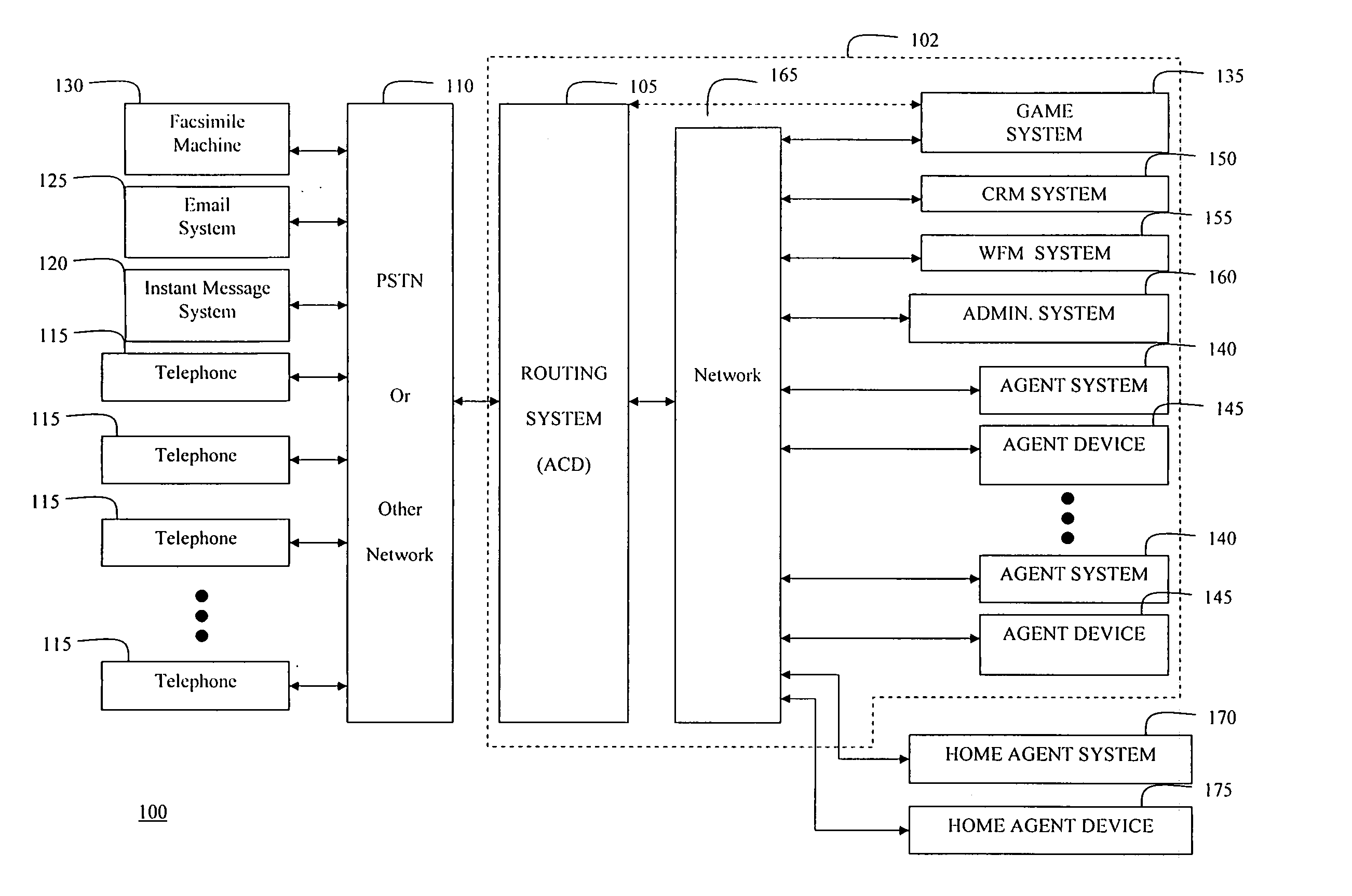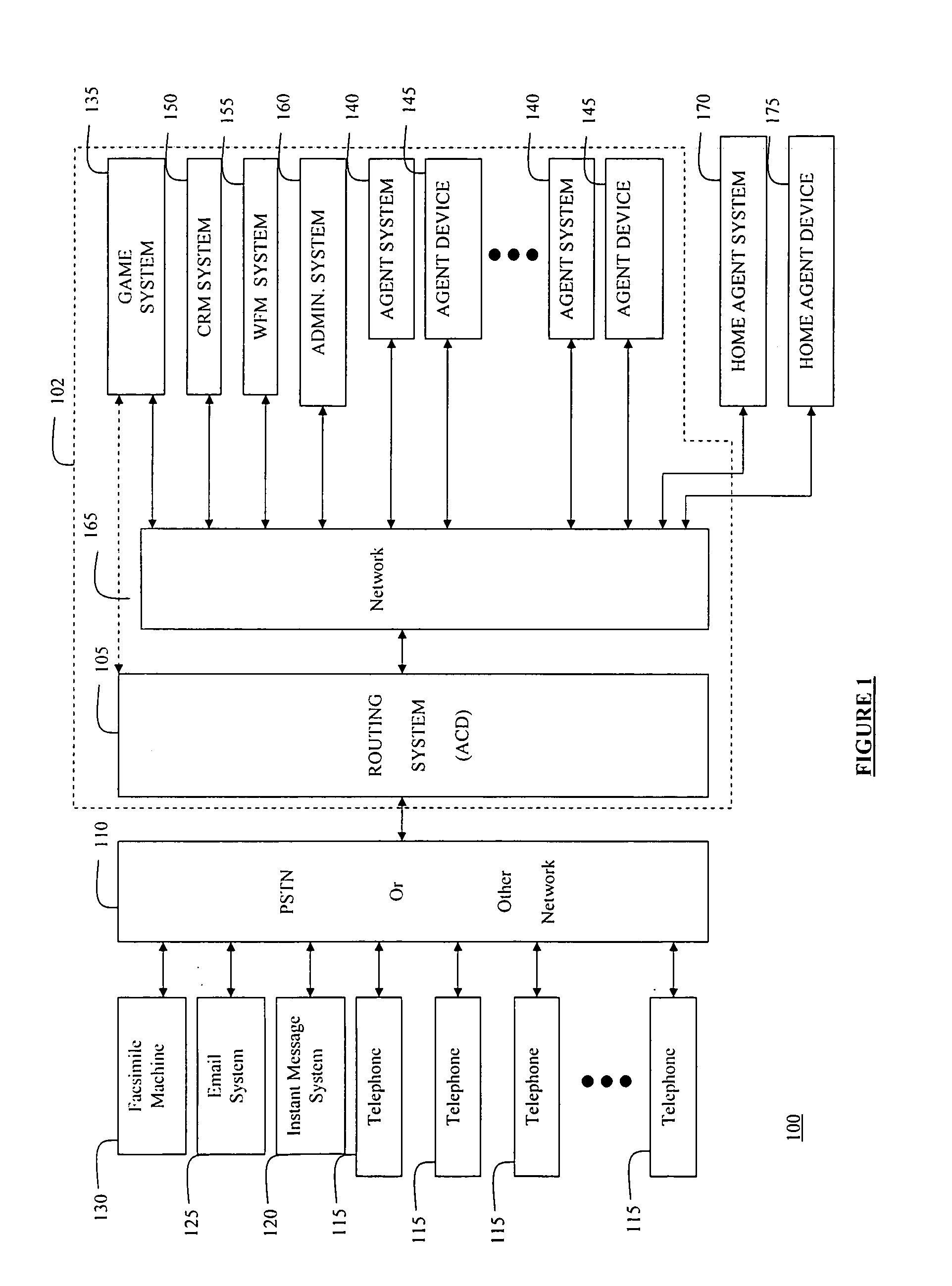Contact-center routing based on games or contests involving the agents
a technology of contact center and game, applied in the field of contact center routing, can solve the problems of uncoordinated and unsystematic routing, rare or cost-effective routing, and routing to an available agent without corresponding skills, so as to reduce shift fatigue, work less boring and monotonous, and achieve greater sense of autonomy
- Summary
- Abstract
- Description
- Claims
- Application Information
AI Technical Summary
Benefits of technology
Problems solved by technology
Method used
Image
Examples
example 1
Bidding Game
[0094] One possible embodiment of the game is a bidding game. Management may offer incentives for handling different call types; in response, the agents bid to handle the different call types. The incentives may take the form of points redeemable by the agents for rewards or prizes. Management may offer a specified number of points for handling a given call type during a designated time period to each agent. These offers may vary from call type to call type and from agent to agent. In response, the agents each may bid to have the opportunity to handle that call type. For example, if management offers n points and the agent bids m points, then the agent may be awarded n-m points for each call of that type that the agent handles during that time period.
[0095] The dynamic evolution of game-based routing in FIG. 11 occurs in a contact center on a continual basis. Contact-center management monitors the performance of the contact center through the WFM system, the CRM system...
example 2
Game based agent staffing
[0097] During operation of a contact center, the contact center experiences a significant increase in two types of service requests. The increase is significant enough to exceed the ability of the available pool of agents to handle the service requests appropriately. Management becomes aware of the increase through network conditions communicated from the ACD to the game server and / or forecasting information from the WFM system. This causes management to increase incentives offered for agents to become staffed or otherwise increase their availability to handle the increased volume.
[0098] Some agents who are not scheduled to work make bids to work, expressing their willingness to be staffed outside of their normal schedule in response to incentives offered by management. If the agent bids high enough, if the agent has appropriate skills, and if the need for unscheduled staffing is sufficiently high, then the agent is notified and may become available to han...
PUM
 Login to View More
Login to View More Abstract
Description
Claims
Application Information
 Login to View More
Login to View More - R&D
- Intellectual Property
- Life Sciences
- Materials
- Tech Scout
- Unparalleled Data Quality
- Higher Quality Content
- 60% Fewer Hallucinations
Browse by: Latest US Patents, China's latest patents, Technical Efficacy Thesaurus, Application Domain, Technology Topic, Popular Technical Reports.
© 2025 PatSnap. All rights reserved.Legal|Privacy policy|Modern Slavery Act Transparency Statement|Sitemap|About US| Contact US: help@patsnap.com



